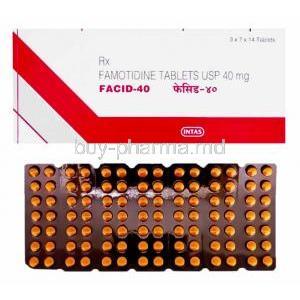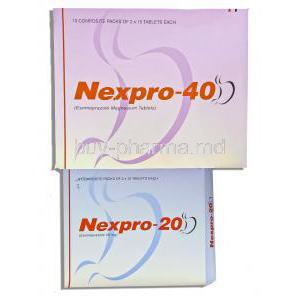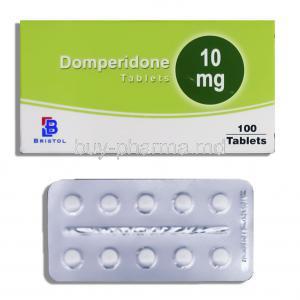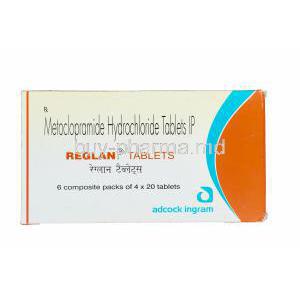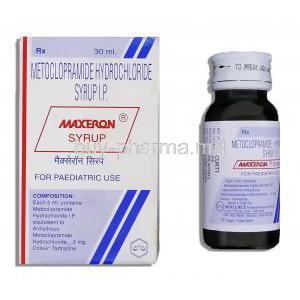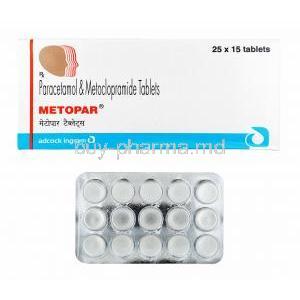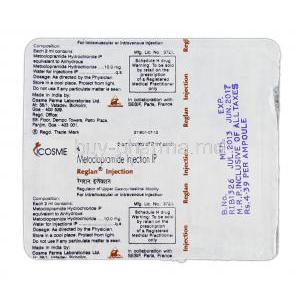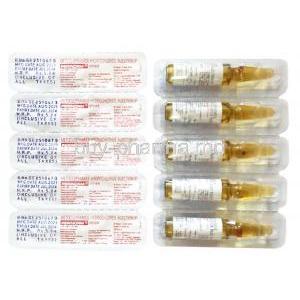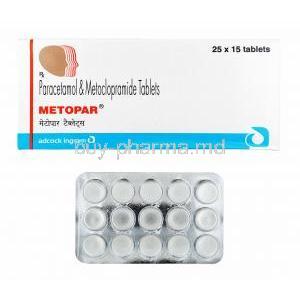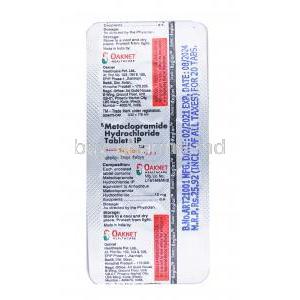Introduction to Dexrabeprazole IV: A Proton Pump Inhibitor for Intravenous Use
Overview of Dexrabeprazole and its S-isomer Formulation
Dexrabeprazole is the pharmacologically active S-isomer of rabeprazole, a potent proton pump inhibitor (PPI). Unlike its racemic counterpart, dexrabeprazole exhibits greater stereoselectivity, offering enhanced acid suppression with potentially fewer side effects. It is specifically formulated for intravenous administration, providing rapid onset for patients unable to tolerate oral medication.
Development History and Therapeutic Classification
Dexrabeprazole was developed to address the limitations of conventional oral PPIs in acute and inpatient settings. It belongs to the benzimidazole class of PPIs and is used to suppress gastric acid secretion by targeting the final step of acid production in parietal cells.
Comparison with Oral PPIs and Racemic Rabeprazole
Compared to oral PPIs, Dexrabeprazole IV bypasses first-pass metabolism and gastrointestinal absorption, leading to a faster therapeutic effect. Its single-enantiomer formulation provides more predictable pharmacokinetics than racemic rabeprazole, resulting in a higher therapeutic index.
Indications for Intravenous Administration in Clinical Practice
Dexrabeprazole IV is primarily used in clinical scenarios where oral administration is impractical or contraindicated. It is ideal for patients in critical care, those with active gastrointestinal bleeding, or individuals requiring urgent acid suppression prior to surgical procedures.
Medical Uses of Dexrabeprazole IV: Approved and Off-Label Applications
2.1 Approved Clinical Indications
- Acute management of gastroesophageal reflux disease (GERD): Effective in patients presenting with severe reflux esophagitis or in those who cannot swallow oral tablets.
- Peptic ulcer disease: Used in cases of active gastric or duodenal ulcers, especially with upper GI bleeding or high-risk lesions.
- Zollinger-Ellison syndrome: Provides rapid acid suppression in patients with gastrin-secreting tumors causing hyperchlorhydria.
- Stress ulcer prophylaxis: Indicated for ICU patients at risk of gastrointestinal bleeding due to severe physiological stress.
2.2 Off-Label and Investigational Uses
- Helicobacter pylori eradication support: Occasionally used as part of intravenous triple therapy when oral regimens are not feasible.
- Acid suppression in non-oral feeding patients: Administered to patients on nasogastric or parenteral nutrition to prevent ulcer formation.
- Preoperative acid reduction: Used prophylactically in surgical candidates with high aspiration risk or pre-existing ulcers.
Mechanism of Action: How Dexrabeprazole IV Works in the Body
Inhibition of H⁺/K⁺ ATPase Enzyme in Gastric Parietal Cells
Dexrabeprazole selectively and irreversibly binds to the proton pump (H⁺/K⁺ ATPase) on the luminal surface of gastric parietal cells, halting the final step in acid production. This results in profound and sustained suppression of gastric acid secretion.
Stereoselectivity and Enhanced Bioavailability Over Racemic Forms
The S-isomer formulation offers improved pharmacodynamics with reduced inter-patient variability. Enhanced bioavailability ensures a consistent therapeutic response, particularly important in acute care.
Duration of Action and Onset Compared to Oral Formulations
Dexrabeprazole IV demonstrates a rapid onset of action, typically within 30 minutes post-administration. Its duration of effect spans 12 to 24 hours, supporting once-daily dosing in most clinical scenarios.
Dosage and Administration Guidelines for Dexrabeprazole IV
4.1 Recommended Dosage in Adults
The standard adult dose for GERD or ulcer management is 10 to 20 mg administered once daily via IV infusion. Dosage may be adjusted based on patient severity, renal function, and treatment response.
Dose Frequency and Adjustment Based on Clinical Condition
In severe hypersecretory states like Zollinger-Ellison syndrome, dosing may be increased or administered more frequently under close supervision. Patients with hepatic impairment may require reduced dosing intervals.
4.2 Administration Technique
- Infusion duration: The drug should be diluted and administered over a period of 15 to 30 minutes.
- Dilution requirements: Compatible with 0.9% sodium chloride and 5% dextrose solutions.
- Precautions: Avoid rapid bolus injection to reduce the risk of local irritation and systemic side effects.
Drug Composition and Available Formulations
Active Ingredient: Dexrabeprazole Sodium
Each vial contains a sterile, lyophilized powder equivalent to 10 mg or 20 mg of dexrabeprazole sodium intended for IV use.
Inactive Components and Excipients
Common excipients include mannitol, sodium hydroxide (for pH adjustment), and sterile water for injection. These components facilitate solubility and stability.
Available Concentrations and Vial Specifications
Dexrabeprazole IV is available in single-use glass vials, commonly in 10 mg and 20 mg strengths. Vials are sealed and stored under sterile conditions.
Storage Instructions and Stability Guidelines
Optimal Temperature Range and Light Sensitivity
Store the vials at 2°C to 8°C (36°F to 46°F). Protect from light and avoid freezing to maintain integrity.
Shelf-Life Before and After Reconstitution
Unopened vials remain stable for 24 months. Once reconstituted, the solution should be used within 4 hours if kept at room temperature.
Stability in Common Diluents
Dexrabeprazole IV is stable in 0.9% sodium chloride and 5% dextrose for up to 4 hours when stored in PVC or glass containers.
Side Effects and Adverse Reactions of Dexrabeprazole IV
7.1 Common Side Effects
- Headache
- Nausea or queasiness
- Localized pain or irritation at the injection site
- Flatulence or abdominal bloating
7.2 Less Common and Serious Reactions
- Hypomagnesemia: May occur with prolonged use, manifesting as tremors, arrhythmias, or seizures.
- Clostridioides difficile infection: Risk increases with long-term or high-dose therapy, particularly in hospitalized patients.
- Liver enzyme elevation: May present with jaundice or elevated ALT/AST levels in rare cases.
- Hypersensitivity reactions: Urticaria, bronchospasm, or anaphylaxis in susceptible individuals.
Drug Interactions: Precautions with Concomitant Medications
- Antiretrovirals and antifungals: Reduced absorption of drugs like atazanavir and itraconazole due to increased gastric pH.
- Warfarin: Potential increase in INR; careful monitoring required when co-administered.
- pH-dependent drugs: Dexrabeprazole may reduce bioavailability of medications such as ketoconazole, iron salts, and erlotinib.
- CYP450 enzyme interactions: Inhibitory effects on CYP2C19 may alter plasma levels of diazepam, phenytoin, and clopidogrel.
Contraindications: When Dexrabeprazole IV Should Not Be Used
Known Hypersensitivity to Rabeprazole or Benzimidazole Compounds
Dexrabeprazole IV is contraindicated in patients with a documented hypersensitivity to rabeprazole, other benzimidazole derivatives, or any of its excipients. Hypersensitivity reactions may manifest as angioedema, urticaria, bronchospasm, or anaphylaxis and necessitate immediate discontinuation.
Severe Hepatic Impairment (Relative Contraindication)
Although not an absolute contraindication, the use of Dexrabeprazole IV in patients with severe hepatic dysfunction requires extreme caution. Reduced hepatic clearance may lead to drug accumulation and increased risk of systemic toxicity.
Previous History of Severe Allergic Reaction to Proton Pump Inhibitors
Patients with a history of life-threatening allergic reactions (e.g., Stevens-Johnson syndrome or toxic epidermal necrolysis) associated with any proton pump inhibitor should not receive Dexrabeprazole IV due to cross-reactivity concerns.
Warnings and Important Precautions in Dexrabeprazole IV Use
Risk of Long-Term Acid Suppression
Prolonged administration of Dexrabeprazole IV has been linked to adverse skeletal and metabolic effects, including:
- Increased risk of osteoporosis-related fractures of the hip, wrist, or spine
- Potential for vitamin B12 malabsorption, particularly in elderly individuals
- Magnesium depletion leading to muscle spasms, arrhythmias, or seizures
Monitoring for Signs of Gastrointestinal Infections
Chronic acid suppression may predispose patients to enteric infections. Notable risks include:
- Clostridioides difficile-associated diarrhea, especially in hospitalized or immunocompromised patients
- Increased susceptibility to community-acquired pneumonia due to bacterial overgrowth
Use in Patients with Existing Electrolyte Disturbances
Patients with baseline hypomagnesemia, hypocalcemia, or hypokalemia require electrolyte correction before initiating therapy. Periodic monitoring is advisable during extended courses of treatment.
Careful Administration in Special Populations
11.1 Use in the Elderly
Pharmacokinetic Considerations
Age-related changes in hepatic and renal function may alter the metabolism and excretion of Dexrabeprazole. The drug may persist longer in systemic circulation, increasing the likelihood of adverse effects.
Monitoring and Dose Adjustment
Elderly patients should be started on the lowest effective dose. Regular monitoring for signs of confusion, falls, or metabolic imbalances is recommended.
11.2 Use in Pregnant and Breastfeeding Women
Pregnancy Safety and Teratogenicity
Dexrabeprazole IV is classified as a pregnancy risk category B/C drug depending on the regulatory authority. Although animal studies have shown no definitive teratogenic effects, controlled data in pregnant women are lacking. Use should be reserved for situations where the potential benefit justifies the potential risk.
Breastfeeding Considerations
It is not known whether Dexrabeprazole is excreted in human breast milk. Given the potential for serious adverse reactions in nursing infants, discontinuation of breastfeeding or the drug may be necessary.
11.3 Use in Pediatric Populations
Off-Label Status
Dexrabeprazole IV is not approved for use in pediatric patients due to insufficient safety and efficacy data.
Use in Adolescents
Limited evidence suggests potential benefits in adolescent patients with severe GERD unresponsive to oral treatment. Use should be guided by specialist consultation and close monitoring.
Overdose Management and Emergency Protocols
Signs and Symptoms of Overdose
Although rare, Dexrabeprazole overdose may present with:
- Neurological disturbances such as confusion, dizziness, or visual changes
- Cardiovascular symptoms like palpitations or tachycardia
- Gastrointestinal upset including nausea or abdominal pain
Recommended Treatment Measures
There is no specific antidote for Dexrabeprazole. Management involves:
- Symptomatic and supportive care
- Monitoring of vital signs and laboratory parameters
- Intravenous fluid support in cases of hypotension or dehydration
Role of Symptomatic Monitoring
Continuous ECG monitoring may be required in patients with electrolyte abnormalities or cardiac symptoms. Activated charcoal may be considered if ingestion is recent and significant.
Handling Precautions and Reconstitution Instructions
Aseptic Technique Requirements
Reconstitution and administration of Dexrabeprazole IV must be performed under strict aseptic conditions. Personnel should wear gloves and protective equipment to prevent contamination or accidental exposure.
Instructions for Dilution and Preparation
- Reconstitute the vial with sterile water for injection to obtain the required concentration
- Further dilute with 0.9% sodium chloride or 5% dextrose before administration
- Administer as an intravenous infusion over 15 to 30 minutes
Disposal of Unused or Expired Product
Unused solution must be discarded in accordance with institutional protocols for cytotoxic or hazardous waste. Do not reuse partially used vials. Ensure appropriate documentation and storage of waste materials pending disposal.
Dexrabeprazole IV FAQ
What is Dexrabeprazole used for?
Dexrabeprazole is commonly prescribed for conditions, like gastroesophageal reflux disease (GERD), peptic ulcers, and Zollinger-Ellison syndrome.
What is the use of rabeprazole IV?
Acid reflux, commonly known as GERD, is a condition treated with rabeprazole to alleviate symptoms like heartburn and potential esophageal damage caused by stomach acid moving in reverse from the stomach to the esophagus in individuals aged 12 years and above, both adults and children.
What is Dexrabeprazole domperidone used for?
The medication Dexrabeprazole combined with Domperidone is commonly prescribed for stomach-related issues such as acidity and heartburn, as well as conditions like gastroesophageal reflux disease (GERD) and Zollinger-Ellison syndrome that affect the digestive system and cause discomfort, like nausea and indigestion.
What is the difference between rabeprazole and Dexrabeprazole?
In terms of relieving symptoms such as heartburn and regurgitation without causing side effects, Dexrabeprazole 10 mg outperforms Rabeprazole 20 mg.
What is Dexlansoprazole and domperidone used for?
The combination of Dexlansoprazole and domperidone is used to treat gastroesophageal reflux disease (GERD) and relieve heartburn.
How long should I wait to eat after taking Rabeprazole?
30 minutes


